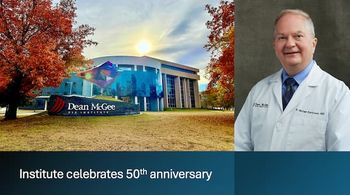
- Ophthalmology Times: February 1, 2021
- Volume 46
- Issue 2
Ophthalmology residents retrained as palliative care extenders
Physicians step-up in emergency departments during COVID-19 surge.
This article was reviewed by Jessica Fleischer-Black, MD
Ophthalmology residents are not usually dealing with life-or-death issues during their training, but residents from New York Eye and Ear Infirmary of Mount Sinai in New York City were called upon last year during the first surge of the
The residents were enlisted with helping emergency physicians by linking patients whose prognosis looked very poor to the hospital’s palliative care department.
Related:
“It was a situation where everyone was trying to do their best,” said Jessica Fleischer-Black, MD, an emergency medicine physician at Mount Sinai Beth Israel Hospital and assistant professor at the Icahn School of Medicine at Mount Sinai in New York, New York.
Fleischer-Black presented research on the outcomes of using the ophthalmology residents at Mount Sinai Beth Israel Hospital at the American College of Emergency Physicians 2020 virtual annual meeting.
“From the emergency department [ED] doctor’s perspective, [ophthalmology residents] made an enormous differences. [They] really helped the [ED] doctor get through that difficult time,” Fleischer-Black told Ophthalmology Times®, noting that family members were not allowed inside the hospital because of infection control. “The coordination [among] 3 departments [emergency medicine, palliative care, and ophthalmology] was unusual but fantastic.”
The Mount Sinai Health System experienced its surge in COVID-19 cases in April 2020 and put in place a 24-hour helpline aimed at connecting ED physicians to palliative care specialists, Fleischer-Black explained.
Related:
However, because ED physicians were overwhelmed by large volumes of patients and wearing personal protective equipment, they were not able to phone the helpline and needed more resources to place those phone calls.
“It became clear that the [ED] doctors were not able to call that [24-hour helpline] because they were just so busy,” Fleischer-Black said. “That is how we decided we needed to put some people in the ED who can be those connectors between the helpline, the patients, and the ED doctor.”
The solution for ED physicians came in the form of ophthalmology residents who were selected because of their clinical experience and their availability, since elective surgeries were halted during the pandemic.
“[Ophthalmology residents] have a lot of people skills,” Fleischer-Black noted. “They have to be up close to patients when they are doing a slit lamp examination and speaking with them. They were a great choice because they have those [people] skills.”
Related:
The ophthalmology residents were also already familiar with the hospital’s electronic medical record system.
Moreover, ophthalmology residents welcomed the opportunity to pitch in. “I got the sense from speaking with them that they were frustrated not being able to help,” Fleischer-Black said. “It is hard when you are a trained physician and there is a huge pandemic going on, and you don’t necessarily have a role in it.”
At least 1 or 2 ophthalmology residents staffed the ED each day for 1 week, filling rotating shifts from 8 am to 3:30 pm and from 3:30 pm to 11 pm.
“They were so talented, and they had so much compassion,” Fleischer Black said. “They would help try and understand if the patient wanted maximal medical intervention or if they did not want to be put on a ventilator. In some cases, they were the ones holding up an iPad so that a family could see their loved one when they died.”
Related:
Young Seol, MD, a second-year ophthalmology resident, is one of the residents who helped out in the ED.
“It was really an ‘all hands on deck’ situation,” Seol recalled. “Very rarely are we dealing with questions of life or death in ophthalmology.”
Seol described the experience as very rewarding and is now applying his learnings about end-of-life care in his ophthalmology residency.
For instance, Seol recently saw a patient with advanced glaucoma who had been diagnosed with stage IV pancreatic cancer.
The patient presented to clinic for routine follow-up, concerned that her chemotherapy may be affected by her eye drop regimen. Although her disease had progressed on her visual fields, Seol engaged the patient about her goals.
Ultimately, Fleischer-Black and colleagues determined that bringing in the ophthalmology residents truly did make a difference.
Related:
“We did an in-depth evaluation of how many palliative care interventions there were the week before [the ophthalmology residents] joined us and compared it to the week they were there,” Fleischer-Black said. “The number of palliative care connections increased by 222%. They made a big difference [to the ED].”
--
jessica Fleischer-black, md
e:[email protected]
Fleischer-Black has no disclosures related to this content.
Articles in this issue
almost 5 years ago
Do you 'need' or just 'want' that new diagnostic imaging device?almost 5 years ago
Noninvasive angiography with OCT offers definite valuealmost 5 years ago
Exploring possibilities of myopia prevention and control in the USalmost 5 years ago
How AAOOP is taking the pandemic by the hornsalmost 5 years ago
EyePod: Ophthalmologist shares Holocaust survival storyalmost 5 years ago
Investigators examine anti-VEGF medications in cases with ROPalmost 5 years ago
Tool offers ultra-rapid cooling for intravitreal injectionsNewsletter
Don’t miss out—get Ophthalmology Times updates on the latest clinical advancements and expert interviews, straight to your inbox.








































